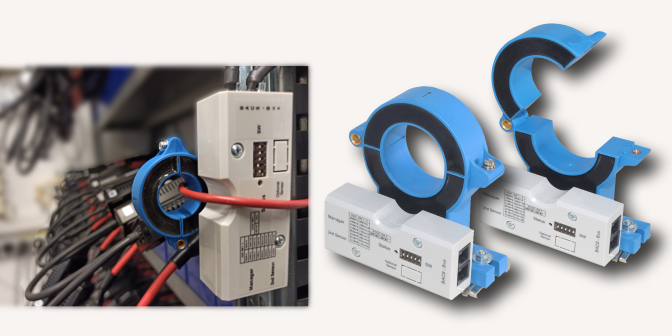Differential current input
All 5th generation sensors have an additional input through which it is possible to connect the CSHxxxxD differential current sensor in order to detect any leaks between the DC input and DC output.
Differential currents should not occur in DC systems as there is a potential risk of getting an electric shock if touched, as the currents use other paths. This problem should be identified and corrected without exception to avoid injury, personal injury or even fatal accidents.
Generally, live parts in electrical devices are protected by personal protection or residual current circuit breakers, but this does not apply to UPS systems! Due to the system, no residual current switch is used there, so a “leak” can certainly lead to personal injury. The usual “workarounds” using an insulated battery rack etc. ensure safety, but do not rule out leakage current. In order to avoid personal injury and property damage, it is important to recognize these. Furthermore, residual currents are harmful to batteries, endanger the UPS technology and can lead to a fire. For this reason, the use of differential current sensors is required in many tenders in the USA and by the US authority NERC.




